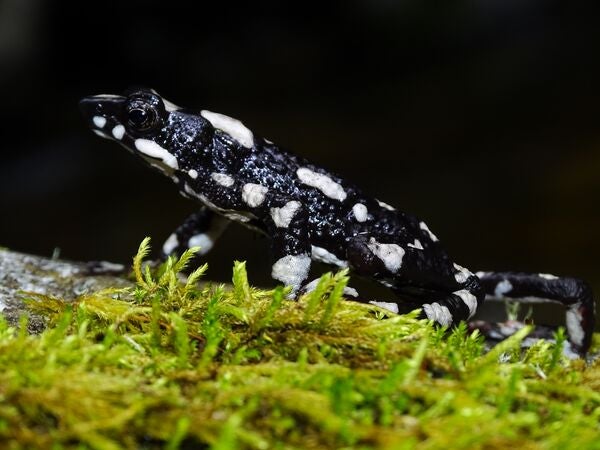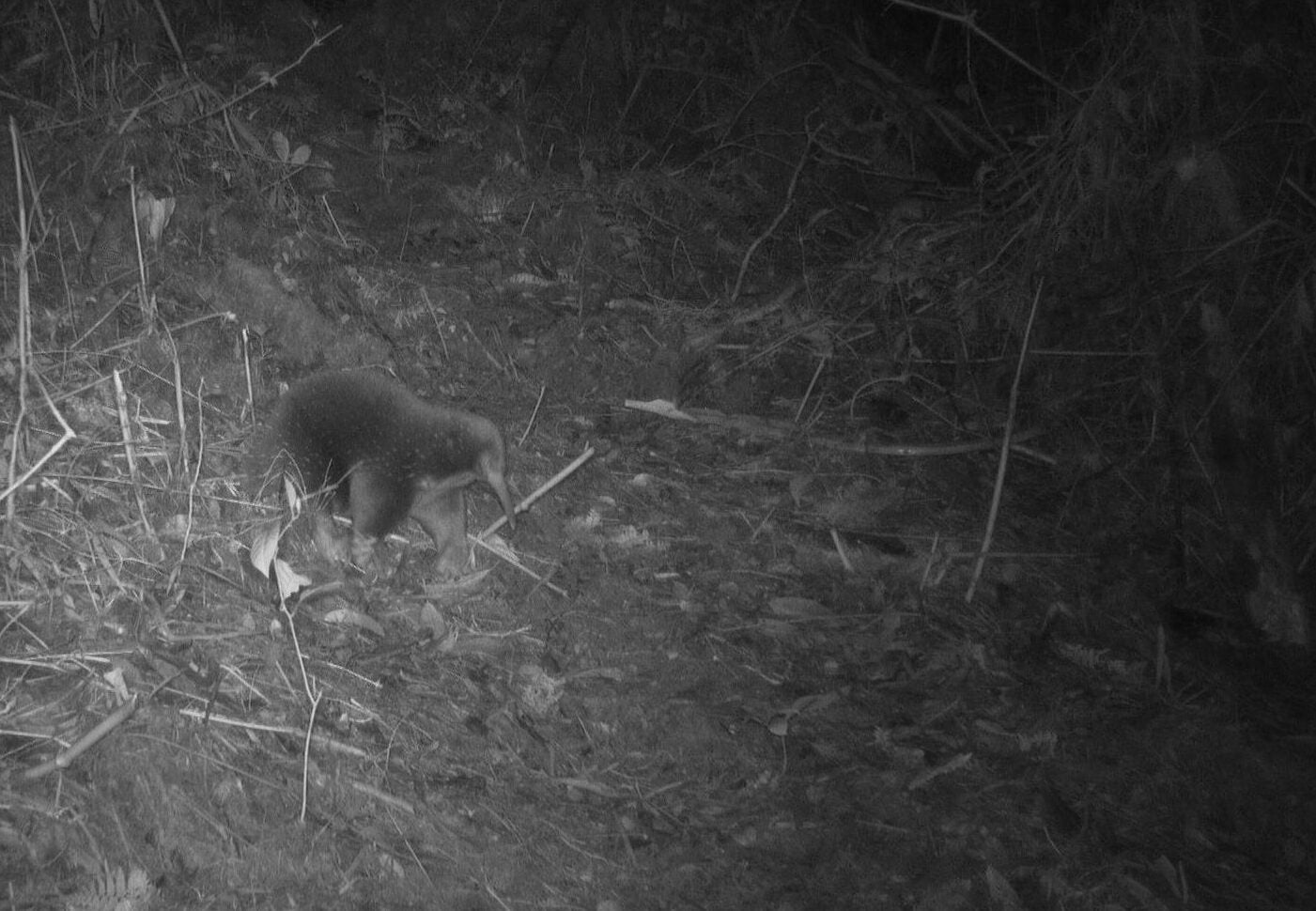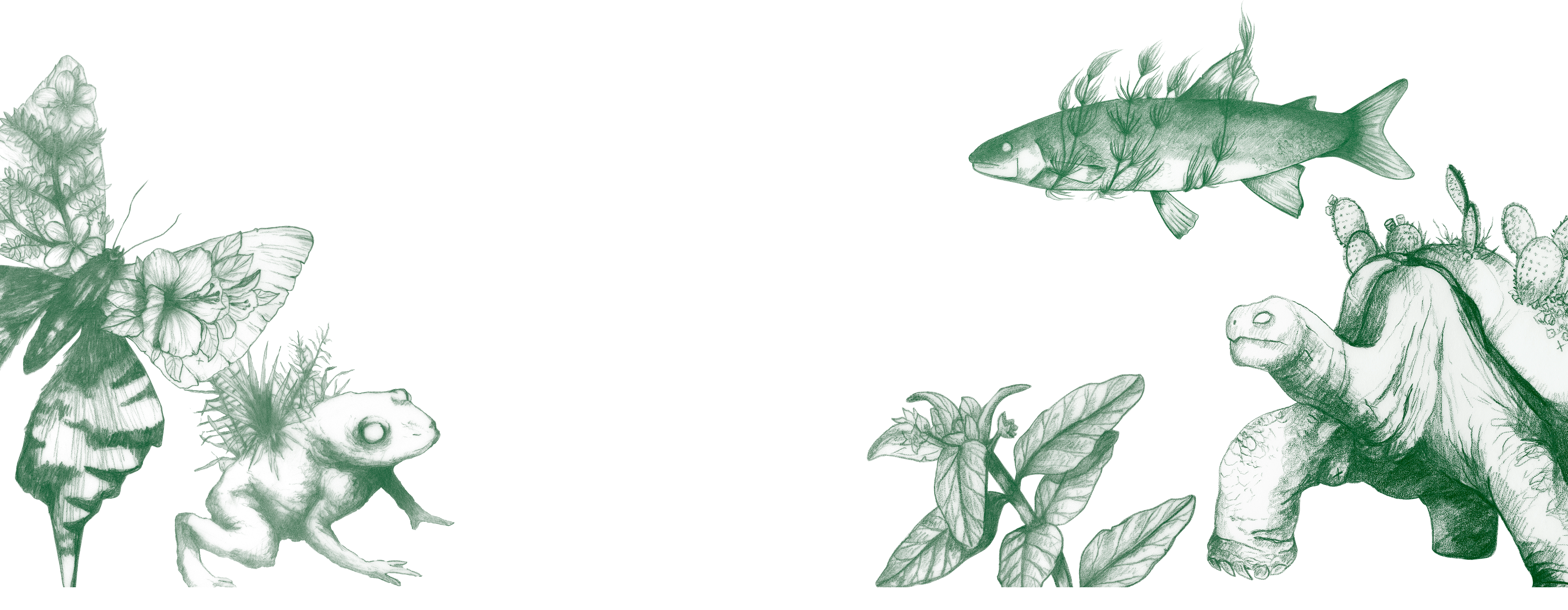

Lost Legends
Some lost species vanish without any fanfare, forgotten in time until an intrepid team goes out to try to find them, or a ranger rediscovers one during his lunch break, bringing their story back to life. Others disappear from our view but live on larger than life in our collective imagination. Those are our lost legends—the species whose rediscoveries are long-shots at best and whose extinctions may have been recent, but who have not disappeared into obscurity, and in some cases, regularly make headlines based on unconfirmed sightings.
Like many of our most wanted lost species, lost legends were pushed to the edge of extinction by a combination of habitat destruction, hunting, disease, introduced species, and human encroachment. Though some of these species may indeed be permanently gone, their stories help us understand our connection to the wildlife that we share the planet with—and our role in protecting them.
Many thanks to Tyler Thrasher for illustrating these lost legends.
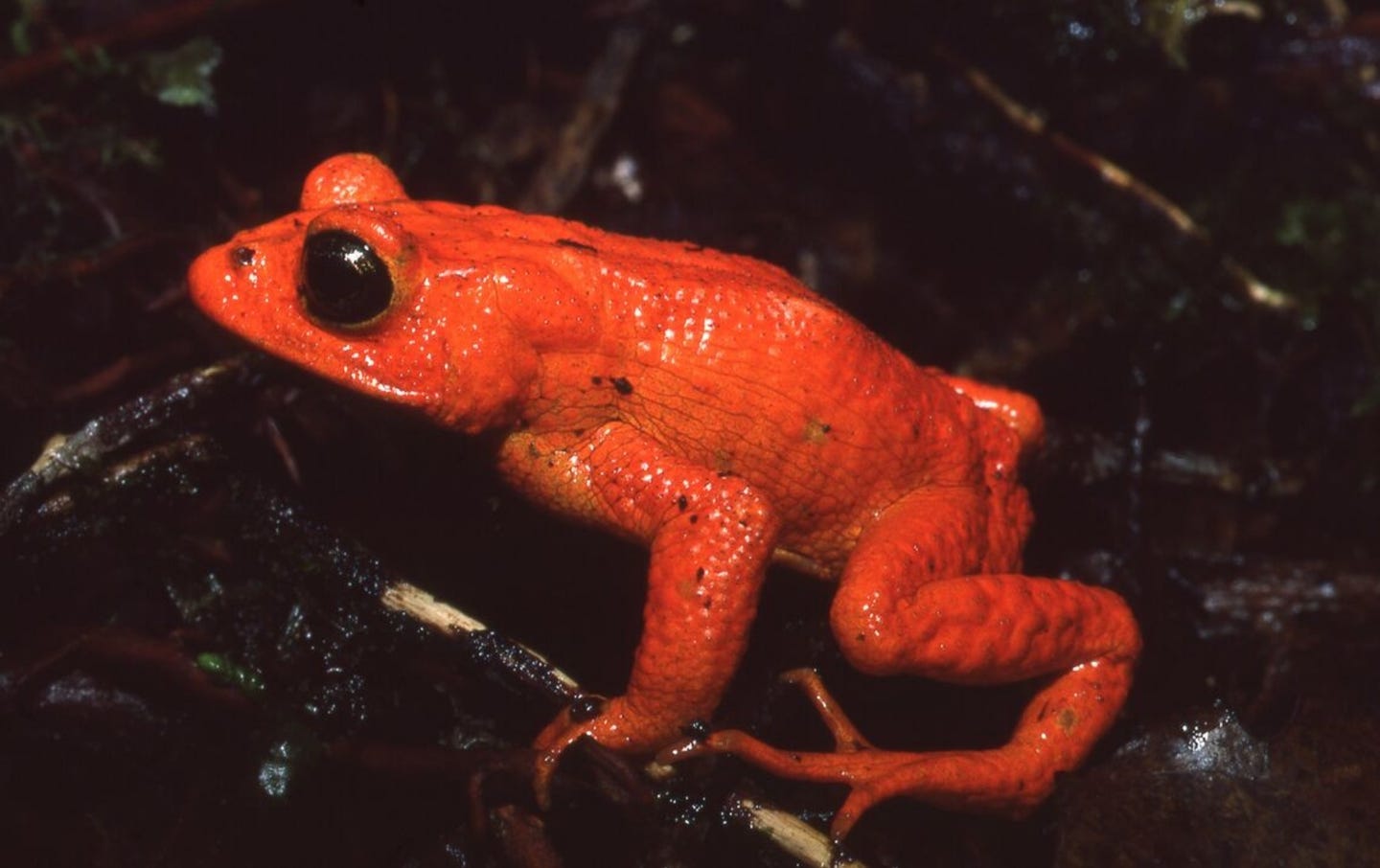
Golden Toad
Last Seen: 1989 in Costa Rica
Years Lost: 35
Red List Status: Extinct
The Golden Toad, a species endemic to a small region of Costa Rica’s Monteverde Cloud Forest, is commonly considered the poster child for amphibian conservation. Males of the species have bright orange skin that stands out against their verdant rainforest backdrop, while females have varying colors and patterns. The species spends most of its life underground, emerging only for a few days at the start of the rainy season to breed and lay eggs in the rainwater pools among tree roots.
Even in their heyday, Golden Toads were never reported to be widespread or abundant, as their habitat was limited to a single cold, wet ridge in the cloud forest. In the spring of 1987, researchers recorded nearly 1,500 toads emerging to breed, but by 1988, it was less than a dozen. By the following year, the last single male Golden Toad was spotted, and the species has since been classified as Extinct by the International Union for Conservation of Nature. Re:wild supported a 2021 expedition in search of the species, to no avail.
Artwork by Tyler Thrasher
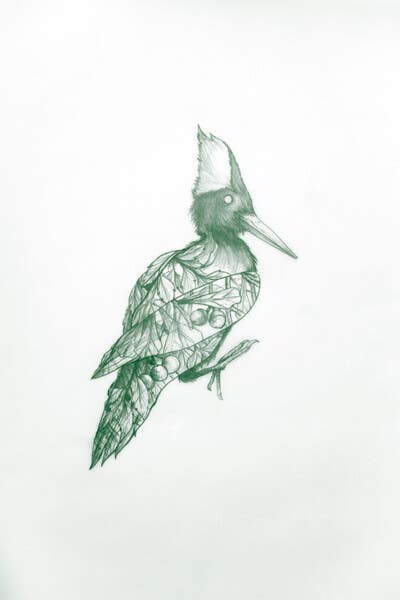
Ivory-Billed Woodpecker
Last Seen: 1944 in Louisiana, United States
Years Lost: 80
Red List Status: Critically Endangered
The Ivory-Billed Woodpecker is one of the world’s most sought-after birds, and its existence has spurred debates for decades. The regal species, which is adorned with a striking red crest, black and white plumage, and a pale bill, is endemic to the forests of the Southeastern United States and Cuba. The woodpeckers’ population plummeted when their woodland habitat was obliterated in 1800, largely due to logging throughout the southeastern United States. Ivory-Billed Woodpeckers need a constant supply of decaying trees to excavate their insect larvae meals, and the loss of trees meant the loss of a key food source.
Though slivers of the populations survived into the 20th century, the species was thought to have been permanently lost around the 1950s. Since then, there have been reports of the birds’ rediscovery, including hazy video footage of a large woodpecker taken in Arkansas in 2004, but this sighting is highly disputed among ornithologists. The footage and other similar reports spurred the Cornell Lab of Ornithology to launch a multi-year effort searching more than half a million acres of the Southeastern states, without success. If any birds survive, experts believe they’re likely in Cuba.
Artwork by Tyler Thrasher
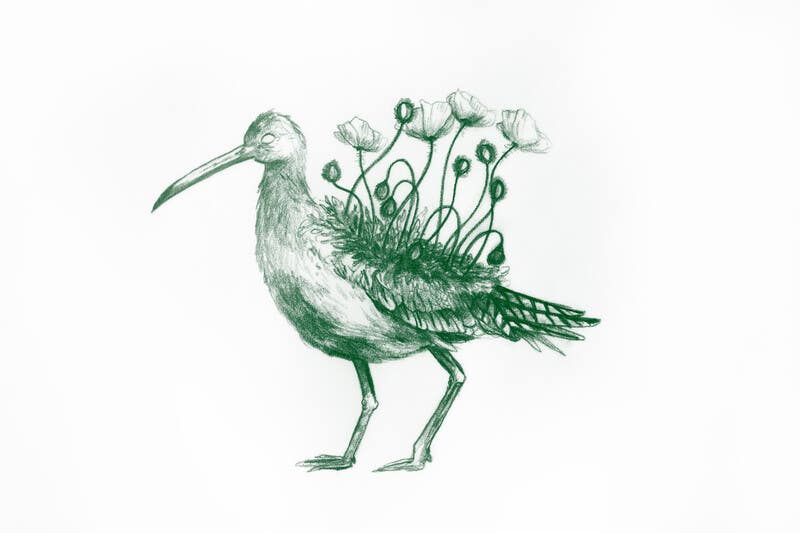
Eskimo Curlew
Last Seen: 1963 in Barbados
Years Lost: 61
Red List Status: Critically Endangered
The Eskimo Curlew was once one of the most numerous shorebirds in the tundra of western Arctic Canada and Alaska, with tens of millions of individuals. The species, which resembles the American subspecies of the Whimbrel, had mottled brown plumage, long legs, and a downcurved bill. When the birds were still numerous, flocks left their breeding territories in the far reaches of North America and flew to their wintering grounds in Argentina.
What started as a robust population of Eskimo Curlew quickly dwindled. During parts of the 19th century, humans killed more than 2 million curlews each year for food. By 1900, a combination of hunting, habitat destruction, and loss of food sources like berries and insects made the bird a rare sight. The last confirmed species sightings were in 1962 on Galveston Island, Texas, and in Barbados in 1963. Artwork by Tyler Thrasher
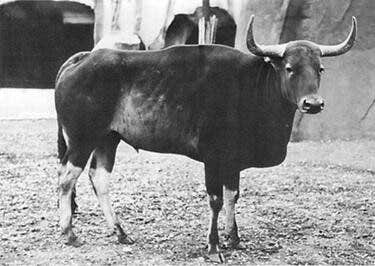
Kouprey
Last Seen: 1988 in Cambodia
Years Lost: 36
Red List Status: Critically Endangered
The Kouprey is an elusive ox native to the forests of Southeast Asia. The bovine’s name is derived from Khmer and means “Forest Ox.” Roughly the size of a cow, Kouprey have a narrow body, long legs, and curved horns. Like other hoofed mammals, called ungulates, they travel in herds, historically grazing the grasslands and dry forests of Cambodia, southern Laos, eastern Thailand, and western Vietnam.
Kouprey were unknown to science until 1937, and rare even then, with only about 2,000 individuals. By the mid-1900s, their numbers were decimated by disease, human conflict, and hunting. The last official sighting of the species was by a zoologist who led an expedition through regions of southeast Asia to capture Kouprey in 1963 and 1964.
Though they haven’t been spotted there in decades, Kouprey are legally protected in their native range in Cambodia. While the occasional presence of Kouprey skulls in local markets sustains some hope that the species persists. Today, most experts believe the species is extinct. If individual Kouprey have persisted, they are likely surviving in the few remaining fragments of their protected habitat among herds of wild Banteng.
Artwork by Tyler Thrasher
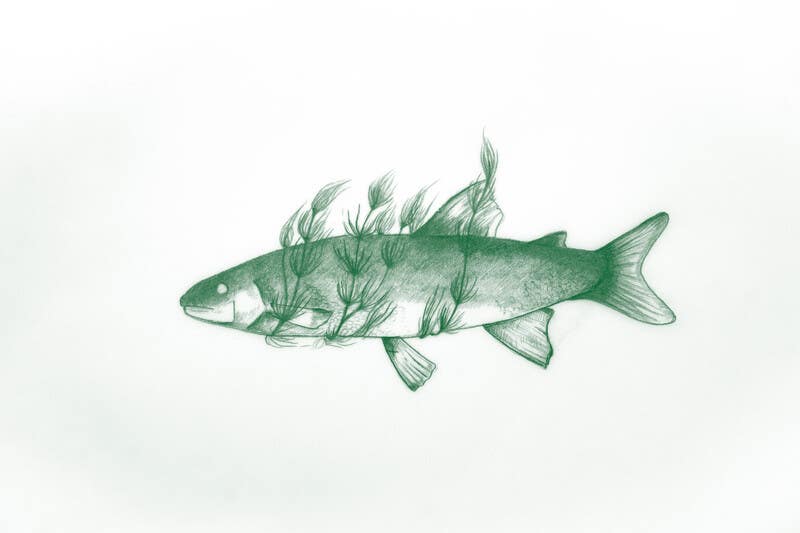
New Zealand Grayling
Last Seen: 1923 in New Zealand
Years Lost: 101
Red List Status: Extinct
This smelt species was known by the Māori people by many names, including Upokororo, depending on the tribe or age of the fish. The species, was an amphidromous fish, migrating between lowland freshwater streams and saltwater during different seasons and stages of life.
New Zealand Graylings were once abundant during the 19th century, but the population started to decrease by the 1870s due to habitat destruction, pollution, disease, and the introduction of invasive predators such as trout. The last official sighting of a New Zealand Grayling was in 1923. In 1951, decades after the last sighting, the species became the country’s first native freshwater fish to be given legal protection. The loss of the species has been particularly impactful for indigenous communities, who relied on the fish as a food source for generations.
Artwork by Tyler Thrasher

Pinta Island Tortoise
Last Seen: 2012 on the Galápagos Islands
Years Lost: 12
Red List Status: Extinct
The Galápagos Islands are home to some of the world’s most unique animals, including numerous species of large, slow-moving tortoises. Each island hosts unique species, and the tortoises of Pinta Island were no exception. The lumbering animals spent their days munching grasses and cactuses, resting, and dispersing seeds in their forest habitat. But by the end of the 19th century, most of the Pinta Island Tortoises had been wiped out due to hunting. The species was assumed to be extinct—until a single male was discovered on the island in 1971, dubbed “Lonesome George.” George, the sole remaining survivor of his species, was relocated to a breeding center where herpetologists encouraged him to mate with females from the adjacent islands with similar genetics. Unfortunately, the couples weren’t successful at producing offspring.
In 2012, the death of Lonesome George, the last Pinta Giant Tortoise, made international headlines. But all hope for the species didn’t die with George, whose legacy still serves as an important symbol for conservation efforts in the Galápagos Islands. A 2012 expedition to Isabella Island found 17 first-generation hybrid offspring. Because those specimens were juveniles, their parents—including a Pinta Giant Tortoise—might still be alive.
Artwork by Tyler Thrasher
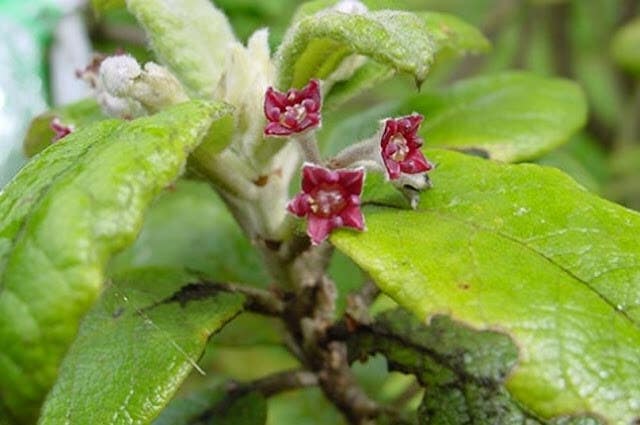
Saint Helena Olive
Last Seen: 2003 on Saint Helena Island
Years Lost: 21
Red List Status: Extinct
The Saint Helena Olive, which is endemic to the remote island of Saint Helena in the South Atlantic Ocean, is not actually a member of the olive family. Instead, it is more closely related to the Jujube Tree. In the 1850s, around a dozen olive trees were recorded growing on the northern side of the island’s highest point, Diana’s Peak. But by the 1970s, only a single tree remained—possibly the last survivor from the population described over 100 years earlier.
This olive tree is a rare example of a tree being pushed to extinction in the last few decades. As animal agriculture on the island expanded, forests were cleared to graze animals like goats. While a few trees initially survived, the species’ limited population meant the trees couldn’t maintain genetic diversity. The species was believed to be extinct until a single tree was found in 1977, but despite attempts to cultivate cuttings from this plant, the seedlings and cuttings succumbed to fungal infections and the Saint Helena Olive was declared Extinct in 2003.
Artwork by Tyler Thrasher

Sloane’s Urania Moth
Last Seen: 1895 in Jamaica
Years Lost: 129
Red List Status: Not Evaluated
Sloan’s Urania Moth’s black wings with shimmering red, blue, and green markings make it a favorite among entomologists and moth-enthusiasts. The iridescent colors of Sloane’s Urania Moth wings originate from the refraction of light off ribbon-like scales, and its bright colors warn predators of its toxins. Like many species in its subfamily, the day-flying moth native to Jamaica is most active when the sun is up.
Sloan’s Urania Moth was first documented in 1779, and within the century, the species was lost. Based on what scientists know about the lifecycle of this species, the moth was pushed toward extinction as Jamaica's lowland rainforests were cleared, wiping out the moth’s singular diet of rainforest lianas, a type of climbing vine found throughout tropical rainforests. As agriculture and human settlement expanded, the moth’s remaining fragments of habitat likely became too limited to support the species.
Artwork by Tyler Thrasher
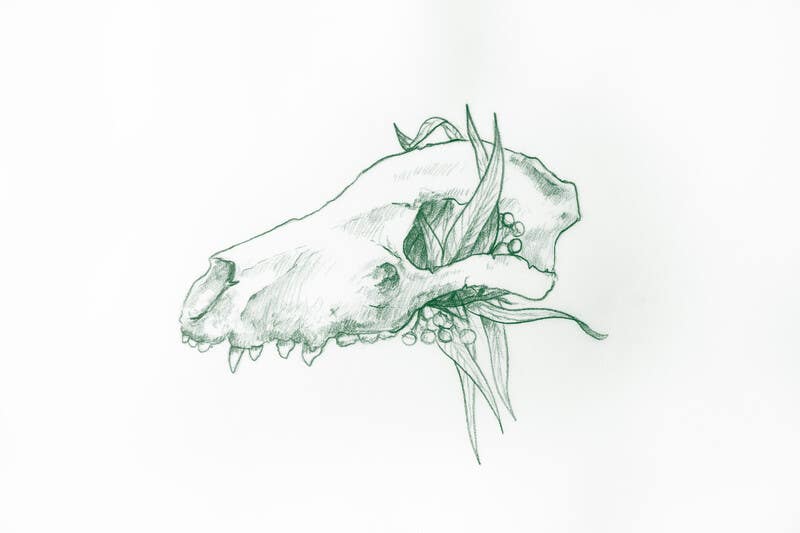
Tasmanian Tiger
Last Seen: 1936 in Tasmania (the last confirmed sighting)
Years Lost: 88
Red List Status: Extinct
The Tasmanian Tiger is surprisingly neither tiger nor wolf: it’s a marsupial. The striped, dog-like animal is closely related to a more familiar carnivorous marsupial, the Tasmanian Devil.
Before it was declared Extinct, the Tasmanian Tiger—also known as Thylacine—was the largest-known carnivorous marsupial in the world, resembling a wolf with an abdominal pouch like that of a kangaroo. At the time of European settlement, there were an estimated 5,000 Tasmanian Tigers. When they were abundant, the species likely preferred hunting small marsupials and scavenging for small prey. Indigenous Australian rock paintings suggest the species lived throughout Tasmania and mainland Australia.
Although unconfirmed sightings of the species have been reported as recently as 2019, the last known Thylacine died in 1936. Since then, hundreds of unconfirmed sightings have spurred searches, though all have been fruitless. The decimation of the species is credited to a combination of disease and overhunting—including bounties at times on the animals’ head. In 1999, a team at the Australian Museum in Sydney attempted to clone a Tasmanian Tiger using 100-year-old preserved tissue samples. Though they were able to replicate the animal’s genes, the scientists ultimately determined the quality of the DNA was too poor to create a living clone.
Artwork by Tyler Thrasher
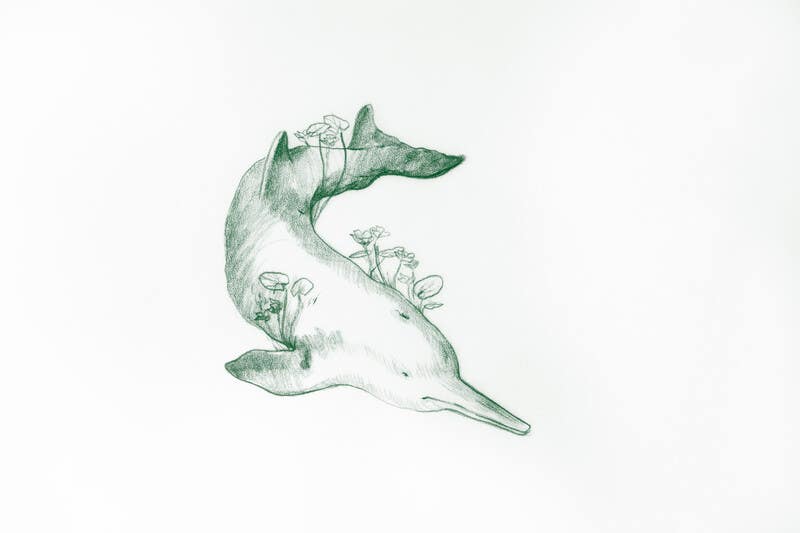
Yangtze River Dolphin
Last Seen: 2002 in China
Years Lost: 22
Red List Status: Critically Endangered
The Yangtze River Dolphin or “Baiji” is thought to be the first dolphin species driven to extinction by humans. For 20 million years, the freshwater porpoises flourished in China’s Yangtze River—then, within five decades, the population crashed and the dolphins were gone. The charismatic animals, which have a stocky body, broad flippers, and a long, narrow snout, haven’t been spotted in the river since the early 2000s.
The decline in Yangtze River Dolphin numbers was closely connected to China’s rapid industrialization in the 20th century. The Yangtze was heavily relied on for fishing, transportation, and hydroelectric power. The river runs 3,900 miles from the Tibetan Plateau to the estuary of the East China Sea near Shanghai and hosts some of the highest levels of biodiversity in the world, including mountains, forests, and wetlands created during seasonal floods. The species was declared Critically Endangered (Possibly Extinct) in 2007 following a failed six-week expedition to find a single survivor. The likely extinction of the Baiji also marked the extinction of the entire Lipotidae family they represented, which evolutionarily separated from the other river dolphins about 20 million years ago.
Artwork by Tyler Thrasher
Explore More About Lost Species
Continue your journey to learn how lost species are found, why they disappear, and the full scope of our search efforts.
